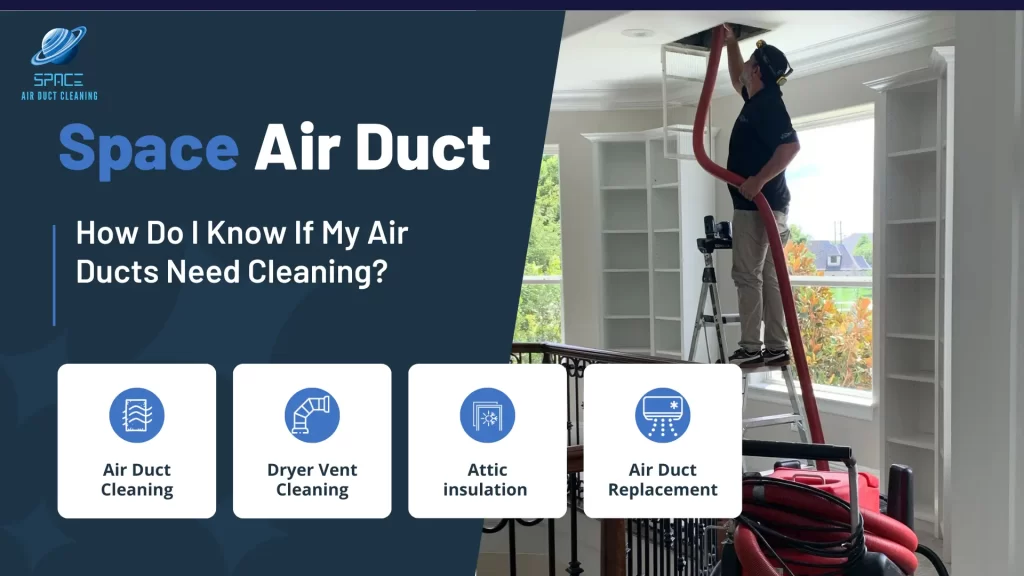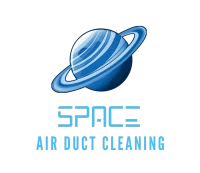The everyday signs you can trust
When ducts need attention, your home or workplace usually tells you. Listen for the little clues that show up in your day-to-day routine:
- Dust builds up fast on furniture and shelves even after you clean them
- Vents and grilles look gray or fuzzy, and a small puff of dust appears when the system starts
- Some rooms feel stuffy or have a faint stale smell, especially after the system has been off
- Allergy or asthma symptoms flare when the heating or cooling kicks on
- Airflow feels weaker in a few rooms compared to others, and filters clog sooner than usual
One or two of these can be normal now and then. When several happen at the same time, it is a strong hint that dust and debris in your ducts are affecting comfort and air quality.
What dust in your ducts actually does
Ducts are the highways for your heated and cooled air. When they are lined with dust, pet hair, drywall powder, and construction debris, the system has to push air past all that buildup. That extra resistance lowers airflow, which makes rooms take longer to reach temperature. The blower works harder, parts wear out faster, and your energy bill rises for the same comfort.
Dust does not just sit in one place either. Every start-up can lift a little more debris and move it into your rooms. That is why you might notice extra cleaning needs, a light film on surfaces, or a musty odor at specific registers. If you own a business, that can mean customers notice a smell in your lobby, or employees complain about stuffy conference rooms. In clinics, salons, and restaurants, cleaner ductwork supports a cleaner experience that people feel from the moment they walk in.
A quick 5-minute check you can do today
You do not have to open walls or crawl into the attic to get a first read. This simple walkthrough helps you decide if a professional visit is worth it.
- Turn the system off. Remove one supply register cover and shine a flashlight inside. A light coating of dust is normal. Thick, matted buildup or debris piles point to a deeper clean.
- Look at your air filter. If it is very dirty after only a few weeks, dust may be circulating inside the ducts.
- With the system running, hold a tissue near a seam you can reach at the air handler or plenum. If it flutters from air movement, leaks could be pulling dusty air in or pushing conditioned air out.
- Smell the air at a few vents after the system has been off. Any stale, musty, or dirty odor that fades after a minute is a common sign of dust in the first few feet of duct.
- Check the return grille. Heavy lint and dust stuck to the face can signal overdue cleaning and a filter that needs more frequent changes.
If these checks raise concerns, it is smart to schedule a professional inspection. You will get photos and readings that confirm what is happening out of sight.
Cleaning or something else, choosing the right fix
Air duct cleaning solves a specific problem, which is debris on interior duct surfaces. It is the right move when dust and light buildup are the main issues. If your building had a recent remodel, you have pets that shed, or filters were forgotten for a while, a proper cleaning can restore airflow and freshness.
Sometimes, though, the symptoms point past dust. Persistent hot and cold spots, rooms with very weak airflow, or ducts that smell even after cleaning can mean there is another cause. Common examples include duct leaks at seams and boots, crushed or kinked flex runs in the attic, undersized return air paths, or very old fiber ductboard that holds odors. In those cases, cleaning alone will not deliver a lasting fix. You may need sealing, small repairs, or limited duct replacement to stop the waste and bring comfort back to every room.
For businesses, think about usage. High-traffic shops and offices benefit from a regular cleaning cycle, but if filters clog unusually fast or rooftop units struggle to keep up, a test for duct leakage and a quick balance of dampers can make cleaning work even better. The best approach is to inspect, measure, and then match the solution to the actual problem.
What a professional duct cleaning includes
A reputable team treats your building with care and focuses on results, not just appearances. The process starts with a visual inspection of accessible ducts, boots, the plenum, and the air handler. Technicians take photos so you can see what they see. Then they protect floors and work areas, remove and clean registers and grilles, and connect a high-powered vacuum to create strong negative pressure. While the vacuum captures debris, rotating brushes and compressed air tools agitate dust from the duct walls. The crew pays special attention to the first several feet near the air handler and to returns, where buildup is often heaviest.
The air handler deserves attention, too. Cleaning the blower wheel and housing, rinsing the evaporator coil when accessible, and clearing the drain pan and line make a big difference in overall performance. After the cleaning, the team reinstalls registers, checks airflow, replaces the filter, and does a final walkthrough so you understand the results. Most homes and many small businesses can be completed in a single visit, scheduled at a time that fits your day.
How often should ducts be cleaned?
There is no one-size-fits-all schedule. Most local homeowners do well with cleaning every three to five years. You might move that up if you have multiple pets, recent renovations, or family members with allergies. For businesses, the right interval depends on the type of work you do. Retail and office spaces often follow a two to three-year cycle. Salons, clinics, and light manufacturing may need more frequent service because of higher dust or product use.
Filter habits matter as much as the calendar. A good rule is to check filters monthly at first, then set a consistent replacement schedule based on what you observe. Clean filters protect your coil, keep airflow strong, and help ducts stay cleaner longer. If filters load up very quickly, ask about a return air upgrade or a different filter size that allows proper airflow without sacrificing capture efficiency.
Services that pair well with duct cleaning
Duct cleaning works best as part of a simple plan to keep the entire system healthy. Many homeowners and businesses bundle a few add-ons for better results and longer-lasting comfort. One smart partner is dryer vent cleaning. It improves dryer performance and reduces fire risk for homes, laundromats, and multi-unit buildings. Coil cleaning on both the indoor evaporator and outdoor condenser helps the system transfer heat efficiently, which means shorter run times and steadier temperatures after your ducts are clean. A blower wheel cleaning restores the designed airflow your equipment was built to deliver and often reduces noise.
If your inspection finds air leaks, professional duct sealing at the plenum, takeoffs, and boots keeps dust out and conditioned air in. Where sections are damaged or badly kinked, a short duct replacement is a quick fix that pays off right away. Attic insulation top offs protect cleaned ducts from heat gain and loss. Smart thermostats help manage schedules, avoid needless runtime, and flag unusual energy use. For buildings with lingering odors or high sensitivity needs, indoor air quality upgrades such as high-efficiency filters or UV lights maintain a cleaner air stream long after the cleaning is complete.
Ready to breathe easier, here is the next step
If your home or business shows the signs above, do not wait for dust to keep cycling through your rooms. Book a professional duct inspection today. We will show you photos from inside key sections, explain what is causing the symptoms you feel, and give you a clear plan. If cleaning is all you need, we will get it done quickly and safely. If sealing, minor repairs, or a small replacement will help your comfort and energy bills, we will lay out those options with straight pricing.
Ask about bundled savings when you schedule air duct cleaning with dryer vent cleaning, coil cleaning, blower wheel service, return air upgrades, attic insulation, and a seasonal HVAC tune-up. We offer flexible appointments for homeowners and for businesses that need off-hours service. Call us now to grab a same-week visit and start enjoying cleaner air and more even comfort across every room.

